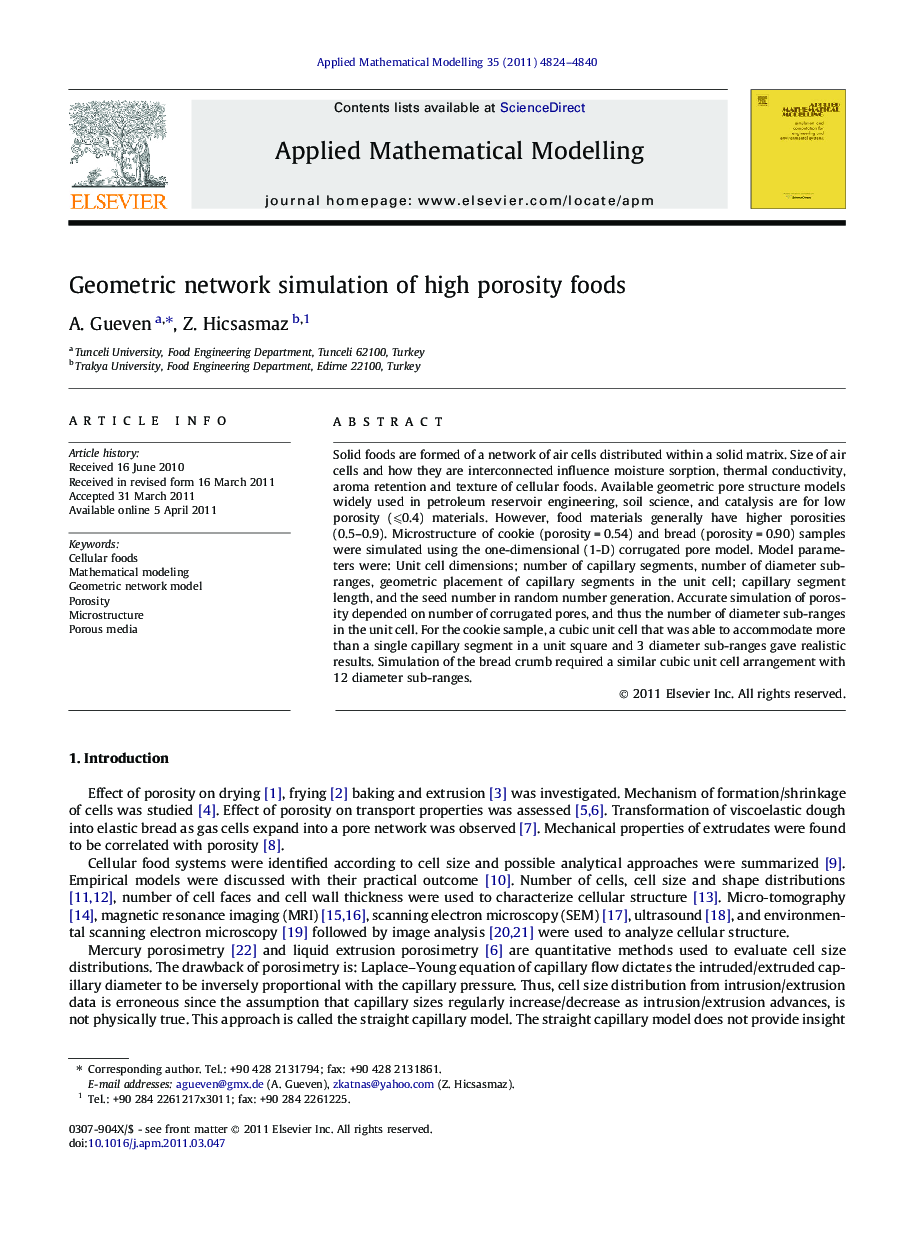| Article ID | Journal | Published Year | Pages | File Type |
|---|---|---|---|---|
| 1706268 | Applied Mathematical Modelling | 2011 | 17 Pages |
Solid foods are formed of a network of air cells distributed within a solid matrix. Size of air cells and how they are interconnected influence moisture sorption, thermal conductivity, aroma retention and texture of cellular foods. Available geometric pore structure models widely used in petroleum reservoir engineering, soil science, and catalysis are for low porosity (⩽0.4) materials. However, food materials generally have higher porosities (0.5–0.9). Microstructure of cookie (porosity = 0.54) and bread (porosity = 0.90) samples were simulated using the one-dimensional (1-D) corrugated pore model. Model parameters were: Unit cell dimensions; number of capillary segments, number of diameter sub-ranges, geometric placement of capillary segments in the unit cell; capillary segment length, and the seed number in random number generation. Accurate simulation of porosity depended on number of corrugated pores, and thus the number of diameter sub-ranges in the unit cell. For the cookie sample, a cubic unit cell that was able to accommodate more than a single capillary segment in a unit square and 3 diameter sub-ranges gave realistic results. Simulation of the bread crumb required a similar cubic unit cell arrangement with 12 diameter sub-ranges.
